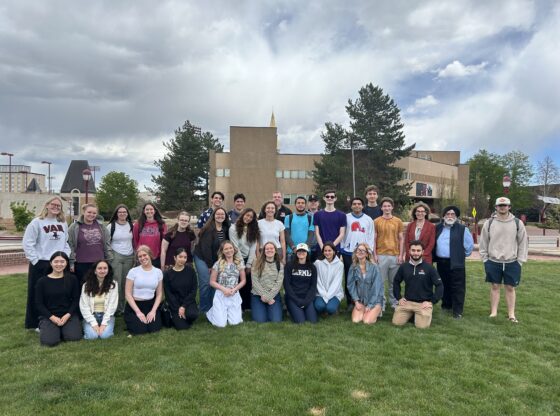“Were you expecting an exploding pen? We don’t really go in for that anymore.” – Q, Skyfall (2012)
Spoilers for “No Time to Die Ahead.” This article is partly a response to the Wall Street Journal opinion piece, “James Bond’s License to Kill Fun” by Andy Kessler.
The pandemic has been a time of great loss for many people on a global scale and continues to be. Imagine losing your father and not being able to be there or grieve him at his grave. Among fraying friendships and work, I lost my father who was on another continent during the height of the pandemic. I was unable to be there for his final days. I can only wonder what more he wanted to tell me in the last video call I did not answer because I was working. I still read his texts whenever I miss his encouragement or just need a kind word that I know is sincere.
Of course, experiencing loss is by no means a requirement for viewing a 007 film. For the unfamiliar, the premise of 007 is simple: he saves the girl, he saves the world, he saves himself.
In the midst of all the chaos in the world, watching a 007 film makes me feel like a kid again. There is no other film that brings me the same excitement and nostalgia as when Bond walks into the frame in his suited silhouette and shoots into the camera.
I was not born until the Pierce Brosnan era of Bond, but I would go on to memorize all the Bonds, read every 007 novel, subscribe to CommanderBond.net and learn as much as I could about Ian Fleming, the author of the 007 novels, for more context.
My 12-year-old opinion that “Devil May Care,” a 007 continuation novel published on the 100th anniversary of the birth of Ian Fleming, is still a decent novel, has not changed. I would recommend it to anyone that enjoys Fleming’s work. I would also have to agree with Travis M. Andrew’s analysis that from the start, Daniel Craig’s Bond was not “new” and “might have been the closest to the character that author and Bond originator Ian Fleming had in mind all along.”
I first fell in love with Sean Connery as James Bond in Dr. No when I was in middle school. I would wake up early on the weekends and camp out in front of the television and instead of cartoons, I would travel back in time and absorb the glamor and wit of decades past. I still distinctly remember eating a slice of apple pie with milk while in my pajamas—I had a real breakfast soon after—as I watched, entranced as this otherworldly handsome man flirted and charmed his way out of danger and into the arms of the classic beauties like Ursula Andress.
Living in the middle of nowhere, in a small town comprised mostly of oil rig men and their families, where the height of fashion was those bedazzled back pocket jeans and camo hats (let the record state that I did not partake then or ever), young Sean Connery was even more breathtaking. I began to dream of all the exotic places where the Sean Conneries of the world had picnics and made witty repertoire with their secretaries and girlfriends, when they weren’t saving the world. One day, I too would experience that magical and beautiful world, I promised myself. And I kept that promise to myself. As someone who has experienced trauma and loss to the extent of PTSD, I realize Bond is fictional, but I still appreciate Craig’s portrayal of Bond’s grief, anger, resentment and lack of normalcy that make him fit to be the unattached cold assassin that he is, until he meets someone who can understand his darkness and distrust.
Upon reflection, even I’m surprised that for all the sulkiness that WSJ columnist Andy Kessler attributes to Craig’s Bond, he opens up enough to love not just once but twice in his final portrayal of 007. Craig’s Bond is complex and real. I would be sulking too, if I kept losing everything I ever loved.
In this final love story, there is also the easter egg of “We Have All The Time in the World ” played at the start and end of the film, which was the theme song in “On Her Majesty’s Secret Service.” Dr. Swann begins to tell her daughter the story of her father as they drive into the sunset while the song plays again at the end of the film. I could not think of a more perfect ending and my inner child was thrilled to consider the prospect of James Bond’s daughter carrying on his legacy.
The plot in “No Time to Die” is adapted to mirror the realities of our world. The enemy isn’t a science fiction villain anymore, it’s our disregard for the environment and the future of humanity. DNA based biological warfare does not seem so far out of reach.
As for the writing, I could feel Phoebe Waller-Bridge’s hand in the dialogue and storyline. I don’t remember such an emotionally attuned 007. Bond is aware of his partner’s detachedness and trauma. When Madeline has a flashback to the most traumatic moment in her life, he asks her if she’s alright a second time, “Where did you go to? Today by the water?”
It’s a question that as someone who once struggled with flashbacks and loss of time, I wish I’d been asked. Hearing it from James Bond was unexpected. Bond spoke like a vulnerable man in love and while I never cry, I was trying desperately not to during the scene where he returns for Dr. Swann.
“I do know that for what felt like five minutes of my life I wanted everything with you. And it’s not because I didn’t trust. It was just that feeling,” Bond said.
Talk about your deep quote. That scene felt like the closure I didn’t know I needed for all my Fleabag relationships (sans priest, I was raised Catholic). As someone who also struggles with an avoidant relationship attachment style, I’m familiar with my own version of that feeling. Bond felt real and intimate. I felt the fear, distrust and vulnerability of a man, a lover and a father, a real person beyond the campy spy that Andy Kessler is nostalgic for. Bond has evolved and as a female viewer of a younger generation, I’m here for it and for more of Phoebe Waller Bridge’s contributions to future plots, dialogue and character development in the film industry.
Change is difficult and I can’t imagine how the next film will follow up. What I do know is that I didn’t like Craig when he initially took over, but after reading Andy Kessler’s review in the Wall Street Journal, I felt strongly enough to overshare my own personal connection to the timeless and iconic franchise and character that is James Bond, through my own female opinion.











